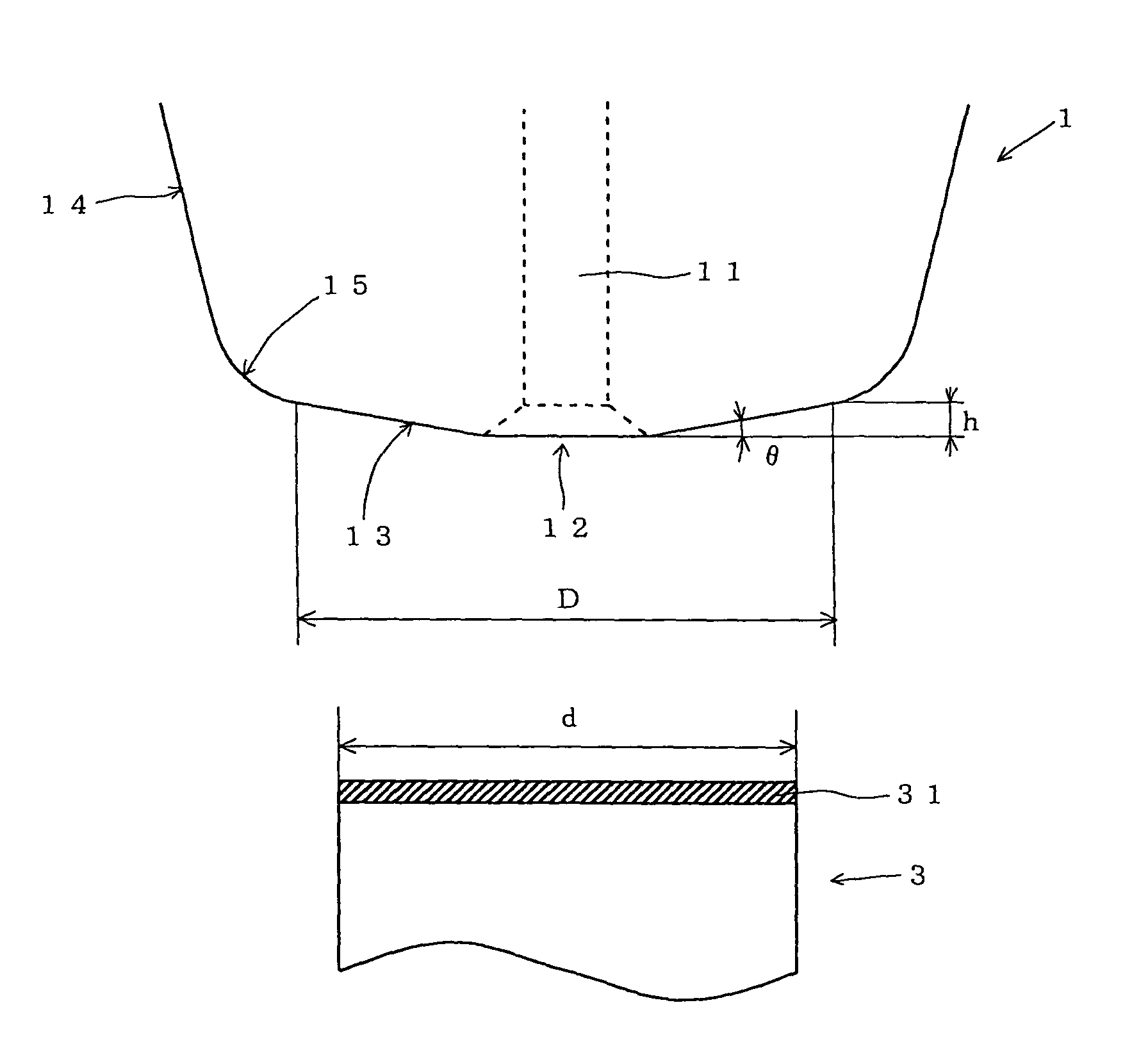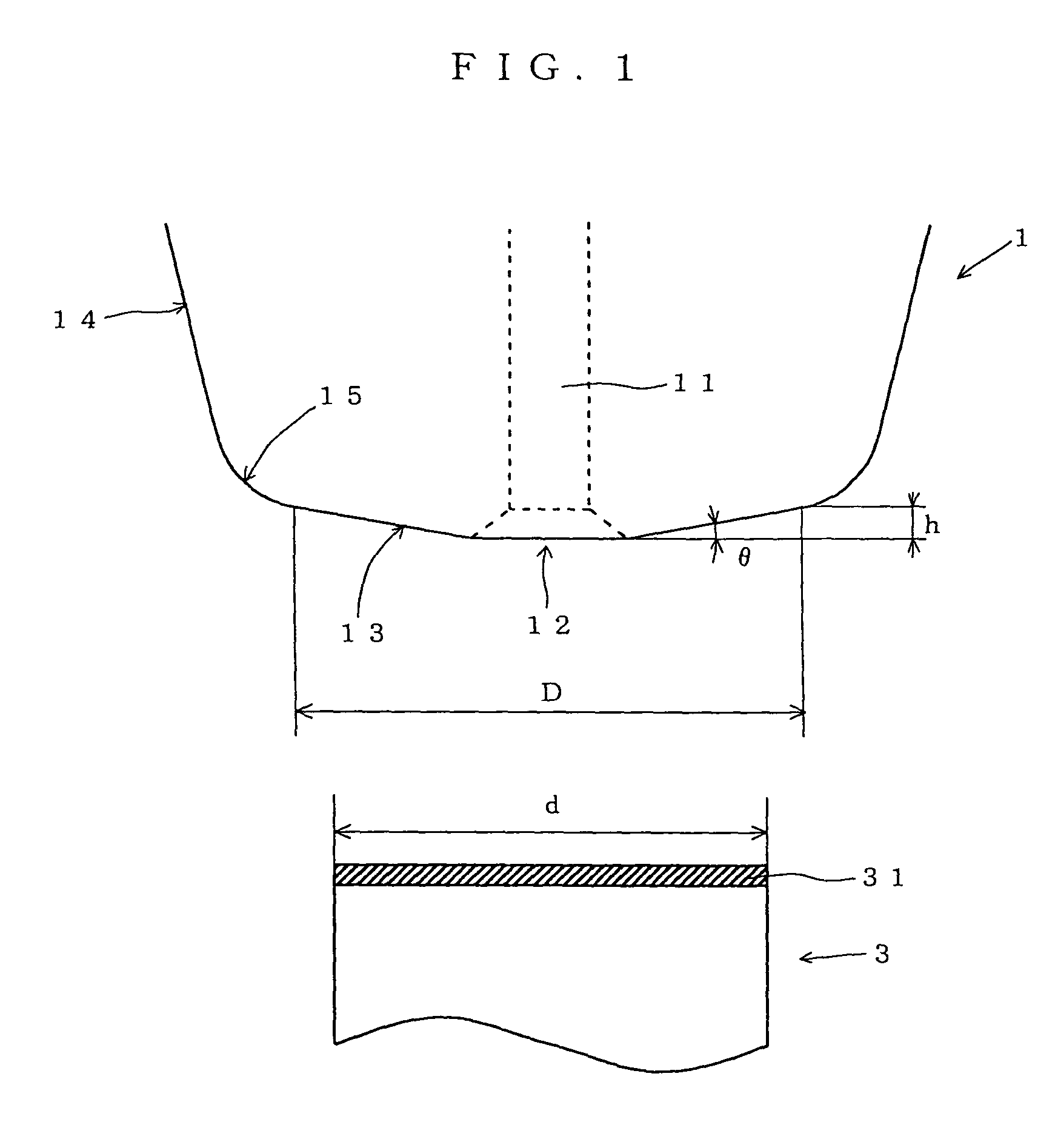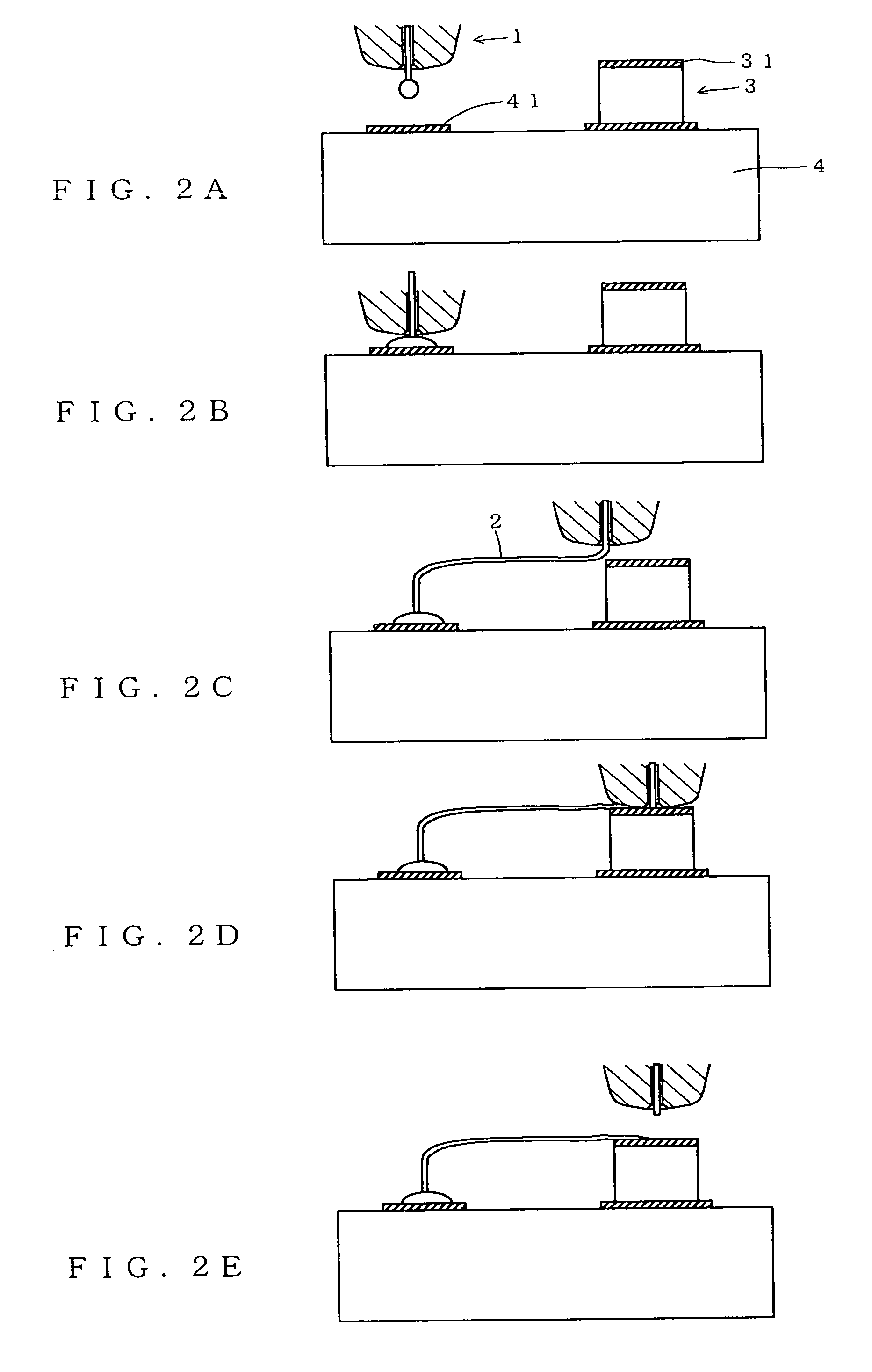Capillary for wire bonding and method of wire bonding using it
- Summary
- Abstract
- Description
- Claims
- Application Information
AI Technical Summary
Benefits of technology
Problems solved by technology
Method used
Image
Examples
Embodiment Construction
[0018]In search of a way of firmly bonding wire to an electrode in stitch bonding, the inventor of the present invention studied various shapes of the face surface of a capillary, and found that the aim is achieved by giving the face surface an inclination angle and a height in predetermined ranges respectively.
[0019]Specifically, in a capillary according to the present invention, it is important to give its face surface an inclination angle in the range from 4° to 15°. If the inclination angle of the face surface is smaller than 4°, the capillary is too thick relative to the height of the face surface, which will be described later. This makes it difficult to bond wire with high density. On the other hand, if the inclination angle of the face surface is larger than 15°, the pressing force is not sufficiently transmitted to wire via the face surface, resulting in imperfect bonding of the wire to electrodes. A further preferred range of the inclination angle of the face surface is fr...
PUM
| Property | Measurement | Unit |
|---|---|---|
| Angle | aaaaa | aaaaa |
| Angle | aaaaa | aaaaa |
| Angle | aaaaa | aaaaa |
Abstract
Description
Claims
Application Information
 Login to View More
Login to View More - R&D
- Intellectual Property
- Life Sciences
- Materials
- Tech Scout
- Unparalleled Data Quality
- Higher Quality Content
- 60% Fewer Hallucinations
Browse by: Latest US Patents, China's latest patents, Technical Efficacy Thesaurus, Application Domain, Technology Topic, Popular Technical Reports.
© 2025 PatSnap. All rights reserved.Legal|Privacy policy|Modern Slavery Act Transparency Statement|Sitemap|About US| Contact US: help@patsnap.com



